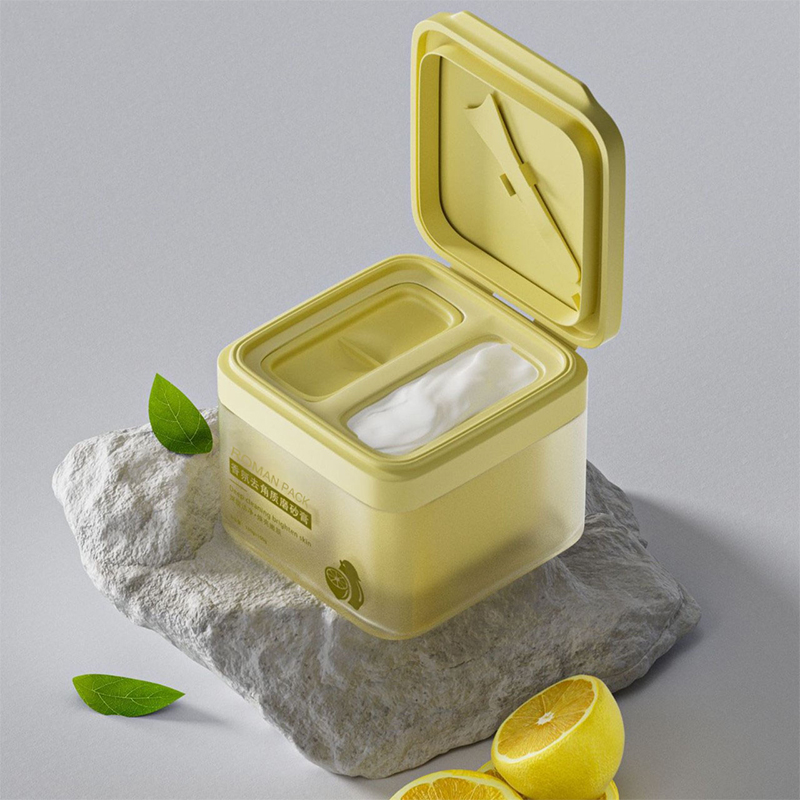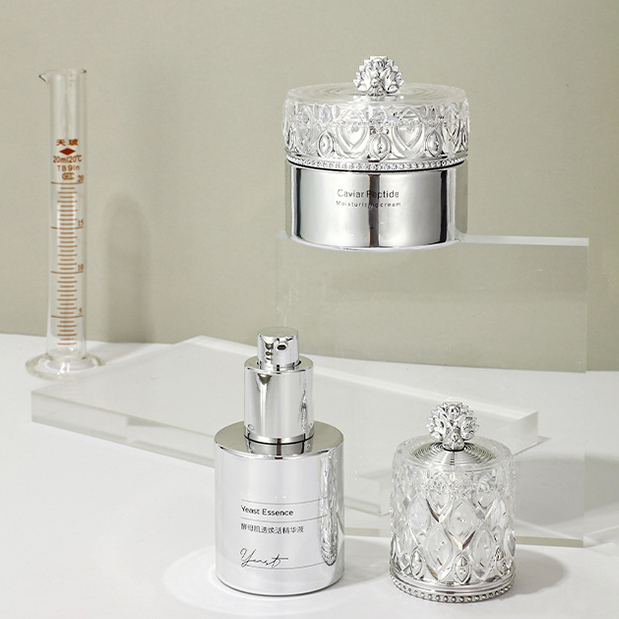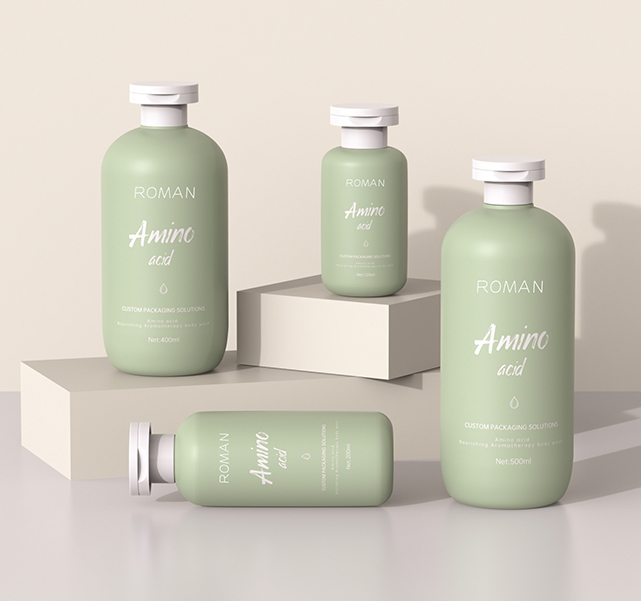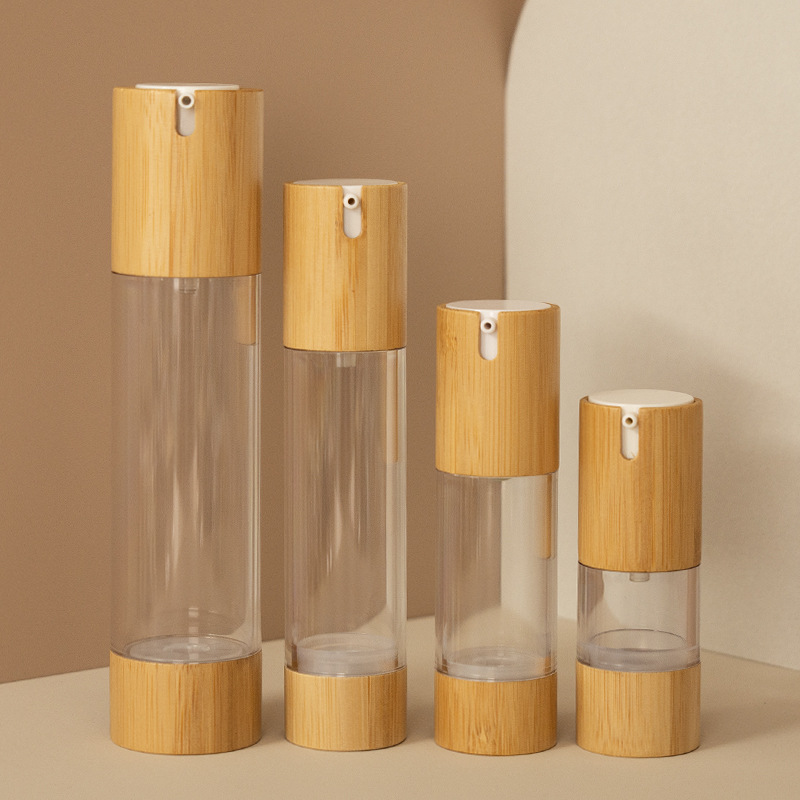Understanding the Role of Plastic Skincare Bottles in Skincare Product Preservation
The preservation of skincare products is a critical consideration for both manufacturers and consumers, as the effectiveness and safety of the product depend largely on the packaging. Plastic skincare bottles play an essential role in protecting these formulations from external factors such as air, light, moisture, and contaminants. These elements can cause degradation of sensitive ingredients, leading to a decrease in product efficacy or even spoilage. Plastic skincare bottles are specifically designed to preserve the integrity of products by acting as a barrier that limits the exposure of the formula to these harmful factors.
Protection from Air and Oxidation
One of the primary causes of degradation in skincare products is oxidation, a process that occurs when air (specifically oxygen) comes into contact with active ingredients such as antioxidants, essential oils, and vitamins. When exposed to oxygen, these ingredients begin to break down, losing their potency and effectiveness. Oxidation can alter the chemical composition of products, leading to changes in color, texture, and fragrance, all of which can diminish a product’s appeal and functionality.
Plastic skincare bottles often incorporate airtight closures, pumps, and seals, which help reduce or eliminate air exposure. Airless pumps, for example, are designed to dispense the product without allowing air to enter the container, ensuring that the formula stays as fresh as possible. This is particularly important for products that contain oxygen-sensitive ingredients such as vitamin C or retinol, as the prevention of air ingress directly contributes to maintaining their stability.
UV Protection and Light Sensitivity
Light, particularly ultraviolet (UV) rays, can be equally damaging to skincare formulations. Ingredients like retinol, vitamin C, and peptides are highly sensitive to light and can degrade when exposed to sunlight. UV light can cause chemical reactions in these compounds, rendering them ineffective or even harmful to the skin. Plastic skincare bottles offer UV protection by being manufactured from materials that block or absorb UV rays. This protection is crucial for extending the shelf life of products, as it prevents the degradation of sensitive ingredients caused by sunlight.
Opaque plastic bottles, for instance, are commonly used for formulations that require protection from light. These bottles shield the product from both visible light and UV rays, ensuring that active ingredients remain stable throughout the product's life. Transparent plastic bottles, while visually appealing, may be coated with a layer of UV-resistant material to offer the same protection. This design helps preserve the potency of sensitive compounds, thus ensuring that the skincare product performs as intended.
Contamination Control and Hygiene
Another important role of plastic skincare bottles is to maintain the hygiene of the product. Skincare products can easily become contaminated by external elements such as dirt, bacteria, and dust, which can compromise the formula and pose a risk to the consumer's skin health. Plastic bottles with secure, airtight seals and dispensing mechanisms, such as pumps or squeeze caps, significantly reduce the risk of contamination. These features minimize the need for direct contact between the product and the user’s hands, which can introduce bacteria or other contaminants into the formula.
Airless pump systems are particularly effective at preventing contamination, as they limit the amount of contact between the product and the environment. By using such systems, manufacturers ensure that their products remain free from microorganisms that could cause irritation or infection. In addition, many plastic bottles are designed with no-touch dispensing methods, ensuring that each use is hygienic and prevents the introduction of harmful substances.
Durability and Safety in Handling
Unlike glass containers, which are more fragile and prone to breaking, plastic skincare bottles are highly durable and resistant to impact. This makes plastic a safer option, particularly for products that are regularly handled, such as during use in the bathroom or in transit. The durability of plastic bottles ensures that the skincare product remains intact even in the case of accidental drops or rough handling. Furthermore, plastic is less likely to shatter into sharp pieces, reducing the risk of injury and product wastage.
Plastic bottles also offer manufacturers the ability to design packaging that is lightweight, making them easier for consumers to use, especially when traveling. The ease of use and portability of plastic bottles contribute to a better user experience and ensure that products are protected from damage during their journey from the manufacturer to the consumer.
Temperature Sensitivity and Insulation
Temperature fluctuations can affect the stability of skincare formulations, particularly those containing ingredients that are sensitive to heat or cold. High temperatures can cause ingredients to break down or separate, leading to reduced effectiveness. Plastic skincare bottles help mitigate these risks by providing insulation against temperature extremes. While not as effective as glass in insulating against temperature changes, plastic still offers a degree of protection, particularly when combined with a carefully engineered design.
Some plastic bottles are equipped with thicker walls or insulation layers, which help maintain the internal temperature of the product. These features are especially important for skincare products that contain natural or organic ingredients, which may be more prone to instability when exposed to extreme temperatures.

How Plastic Skincare Bottles Enhance the Shelf Life of Skincare Formulas
The shelf life of a skincare product is a crucial factor in determining its effectiveness and safety. Plastic skincare bottles play a pivotal role in extending the shelf life of these products by minimizing exposure to factors that can cause degradation. The material, design, and sealing mechanisms of plastic bottles are specifically engineered to preserve the quality of the product, ensuring that it remains effective for a longer period.
Protection from Oxygen and Oxidative Damage
Oxygen exposure is one of the main culprits behind the deterioration of skincare products, especially those containing sensitive active ingredients. When oxygen interacts with these ingredients, it can trigger oxidation, a chemical reaction that results in the degradation of the product. Oxidation can cause changes in the product’s appearance, texture, and scent, and it can reduce the efficacy of active compounds like vitamins, antioxidants, and peptides.
Plastic skincare bottles equipped with airless pumps or airtight seals are designed to prevent oxygen from entering the container. Airless pumps, for instance, push the product out without allowing air to enter, maintaining a vacuum seal inside the bottle. This vacuum environment helps to preserve the product’s freshness and prevent oxidation. By minimizing air exposure, plastic bottles help ensure that the active ingredients remain potent throughout the product’s shelf life.
UV Protection and Light Sensitivity
Light, especially UV rays, can also play a significant role in the breakdown of skincare formulas. Ingredients such as vitamin C and retinol are highly sensitive to light, and prolonged exposure to sunlight can cause them to degrade, reducing their effectiveness. Plastic skincare bottles that are UV-resistant provide an additional layer of protection, shielding the product from harmful light.
Opaque plastic bottles, which block both visible light and UV rays, are commonly used for products with light-sensitive ingredients. These bottles prevent the degradation of the active ingredients inside, ensuring that the formula remains stable and effective throughout its shelf life. UV-resistant coatings or the use of dark-colored plastic are common techniques employed to protect products from the damaging effects of light.
Moisture Resistance and Preservation of Formula Consistency
Moisture is another factor that can contribute to the degradation of skincare products. Exposure to moisture can cause emulsions to break, leading to separation of ingredients or the growth of bacteria and mold. Plastic skincare bottles with secure, moisture-resistant seals help to prevent external moisture from coming into contact with the product. These bottles are designed to keep the formulation intact, preventing contamination or dilution that could affect the product’s consistency.
Airless pump bottles are particularly effective in this regard, as they minimize the introduction of moisture into the formula. The sealed environment ensures that the product remains intact, even in humid conditions. The ability to maintain the product’s consistency and integrity over time is crucial for extending its shelf life.
Protection Against Contamination
Contamination is a significant concern for skincare products, as the introduction of bacteria or dirt can compromise the safety and efficacy of the product. Plastic skincare bottles are designed with dispensing systems, such as pumps or squeeze caps, that minimize the risk of contamination. These systems help to reduce direct contact between the product and the environment, ensuring that the formula remains hygienic.
Airless pumps, for example, limit exposure to the air and prevent users from contaminating the product with their hands. This is especially important for products like creams, lotions, and serums that are dispensed frequently. By preventing external contamination, plastic bottles help to preserve the product's integrity and maintain its shelf life.
Durability and Handling
Plastic is a durable and impact-resistant material, which helps to ensure that the packaging remains intact even when subjected to rough handling or drops. Unlike glass, which can break easily, plastic bottles provide added protection for the skincare formula, preventing the product from being exposed to air or light due to packaging damage.
The durability of plastic also contributes to the overall shelf life of the product, as it reduces the risk of external factors causing product spoilage. Whether during manufacturing, transportation, or everyday use, plastic skincare bottles offer a level of security that ensures the product’s integrity is maintained.
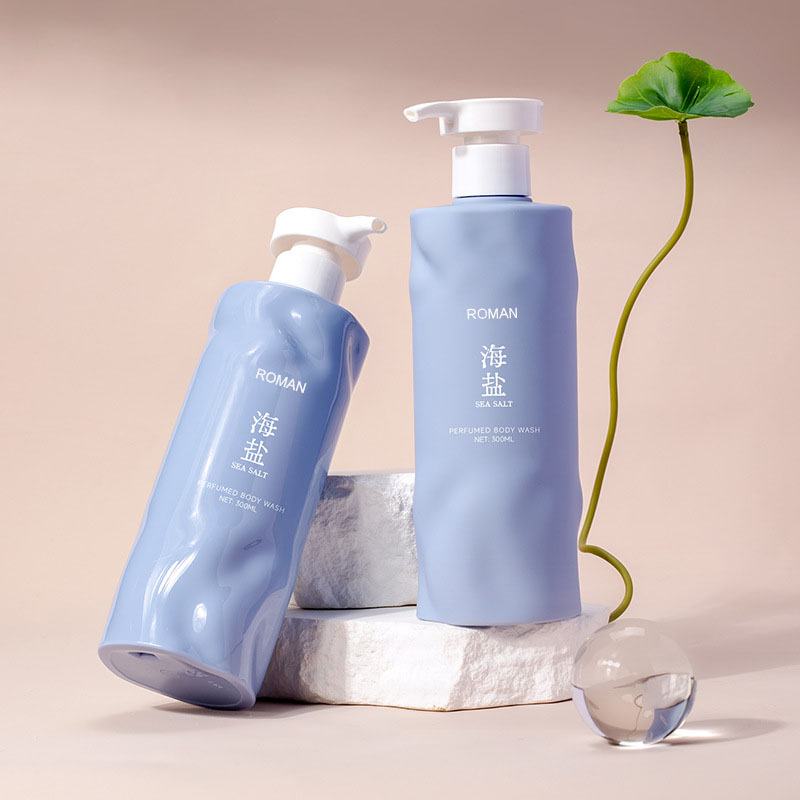 |
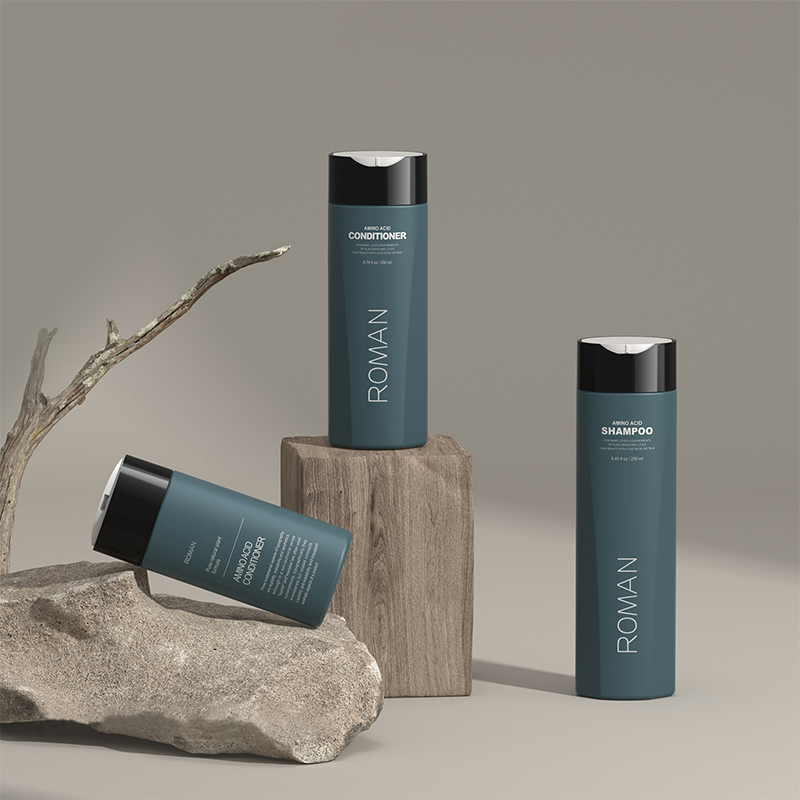 |
The Benefits of Plastic Skincare Bottles Over Other Packaging Materials
Plastic skincare bottles offer numerous advantages over other packaging materials like glass, metal, and aluminum. These benefits are not just about cost-effectiveness or convenience, but also about the ability to enhance product preservation, user experience, and sustainability. Below, we will explore how plastic skincare bottles compare to other packaging materials and why they are often the preferred choice for manufacturers and consumers.
Lightweight and Durable
One of the most significant advantages of plastic over glass or metal is its lightweight nature. Plastic bottles are much lighter than glass containers, making them easier for consumers to carry and use, especially when traveling. The reduced weight also contributes to lower shipping and transportation costs, benefiting manufacturers and distributors. Plastic packaging, therefore, provides both economic and practical advantages for companies.
In addition to being lightweight, plastic is also highly durable. Unlike glass, which can break easily, plastic is resistant to cracking or shattering, making it a safer option for skincare products. This durability is essential for preventing product waste or contamination that could occur if the bottle were to break. The robustness of plastic also means that it can withstand various handling and storage conditions without compromising the quality of the product.
Versatility in Design
Plastic is a highly versatile material that can be molded into virtually any shape or size, offering brands the flexibility to create custom packaging that fits their product’s identity. Whether it’s a sleek, minimalist design or a more intricate, decorative bottle, plastic allows for greater creativity in packaging. In contrast, materials like glass are more rigid in their design capabilities and may not offer the same level of flexibility.
Plastic bottles can be manufactured with various finishes, including glossy, matte, or textured surfaces, allowing brands to create packaging that reflects the product's premium nature or unique aesthetic. The ability to produce a wide range of designs makes plastic the preferred choice for skincare brands looking to differentiate themselves in a competitive market.
Cost-Effectiveness
Plastic is generally more cost-effective than glass or metal. The raw material is less expensive, and the manufacturing process is more efficient, which helps to keep costs down for both brands and consumers. Plastic bottles can be produced in large quantities at a relatively low cost, which is particularly advantageous for skincare brands looking to scale their operations.
Moreover, the lightweight nature of plastic reduces shipping costs, making it a more affordable option for both manufacturers and consumers. The overall cost-effectiveness of plastic packaging allows skincare brands to offer high-quality products at a more competitive price point.
Non-Reactivity and Safety
Plastic is a non-reactive material, meaning that it will not interact with the ingredients inside the bottle. This is particularly important for skincare products that contain active ingredients, such as antioxidants, retinol, and essential oils, which can be sensitive to certain metals. Glass bottles, on the other hand, may interact with certain substances and cause them to degrade, while metal containers may rust or corrode over time.
The non-reactive nature of plastic ensures that the product remains stable and that its active ingredients maintain their efficacy. Additionally, plastic is free from potentially harmful chemicals like lead, which can sometimes be found in metal containers. As a result, plastic skincare bottles provide a safe and reliable packaging solution for a wide range of skincare formulations.
Sustainability Efforts
In recent years, the skincare industry has made strides toward adopting more sustainable packaging solutions. Plastic skincare bottles are increasingly being made from recyclable materials, such as PET (polyethylene terephthalate) or HDPE (high-density polyethylene), which can be recycled and reused to create new products. Many brands are also exploring biodegradable plastics or packaging made from plant-based materials, offering an eco-friendly alternative to traditional plastic.
The lightweight nature of plastic reduces transportation emissions, making it a more sustainable option compared to heavier glass containers. Plastic bottles also require less energy to produce, further contributing to their overall environmental impact.
Plastic Skincare Bottles and Their Role in Enhancing Product Usability
In addition to their functional properties of preserving the efficacy of skincare formulations, plastic skincare bottles contribute significantly to the overall user experience. The design, ease of use, and ergonomic features of the packaging are vital elements that influence consumer satisfaction. Plastic bottles, through their innovative designs, provide numerous benefits that improve the usability of skincare products, making them more accessible, hygienic, and convenient for users.
Easy-to-Use Dispensing Mechanisms
One of the primary features of plastic skincare bottles is their ability to incorporate a wide range of dispensing mechanisms that enhance user convenience. Plastic bottles can be equipped with pumps, airless pumps, squeeze caps, or flip tops, all of which provide ease of use, accuracy, and minimal wastage. These dispensing methods are crucial in controlling the amount of product dispensed, ensuring that the user can apply the correct amount without overusing or wasting the product.
Airless pump systems, for example, have become increasingly popular in skincare packaging due to their ability to deliver a controlled, precise amount of product without allowing air to enter the container. This ensures that the active ingredients remain stable throughout use, and it also eliminates the need for users to manually open the bottle, reducing the risk of contamination. Additionally, pumps and airless systems can be designed to allow users to extract almost every last drop of product, minimizing product waste and extending the product’s usage time.
Ergonomics and User Comfort
Plastic skincare bottles are designed with ergonomics in mind, ensuring that they are comfortable and easy to hold and use. The lightweight nature of plastic means that the bottles are easier to handle than glass or metal alternatives, which is especially important for people with limited hand strength or dexterity. Furthermore, plastic bottles are often designed with contoured shapes that fit comfortably in the palm, providing users with a better grip and a more pleasant application experience.
The flexibility of plastic allows manufacturers to produce bottles in a variety of shapes and sizes, from small travel-sized containers to large dispensers. This versatility ensures that users can easily store and use their skincare products without difficulty, whether at home or on the go. Whether the bottle is designed for facial serums, moisturizers, sunscreens, or body lotions, the ergonomic design of plastic packaging contributes to a seamless user experience.
Hygiene and Reduced Contamination Risk
Another significant advantage of plastic skincare bottles is their ability to minimize the risk of contamination. Skincare products can easily become contaminated by bacteria, dirt, or other harmful microorganisms if the packaging allows for frequent exposure to the air or the user’s hands. This is especially true for products with a creamy or viscous texture, such as moisturizers, where the likelihood of contamination is higher.
Plastic bottles with airtight seals or dispensing systems that limit contact between the product and external elements are ideal for maintaining the product’s hygiene. Airless pumps, for instance, eliminate the need for users to touch the product with their hands, thereby reducing the risk of introducing bacteria or dirt into the bottle. Moreover, many plastic bottles are designed with no-touch dispensing mechanisms, which provide added protection against contamination.
For products like sunscreens and serums, where maintaining cleanliness is critical, these no-touch systems ensure that the formula remains untouched by any external contaminants. This feature is particularly appreciated by users with sensitive skin, who may be prone to irritation or breakouts caused by contaminated products.
Travel-Friendly and Portable
Plastic skincare bottles are particularly advantageous for consumers who travel frequently or are on the go. Their lightweight nature, combined with durability, makes them an ideal choice for travel. Unlike glass bottles, which are more fragile and prone to breakage during transport, plastic bottles are resistant to impact, ensuring that the product remains intact even when packed in a suitcase or carry-on bag.
Additionally, many plastic skincare bottles are designed with travel-friendly features, such as secure caps, leak-proof seals, and compact sizes. These features prevent the product from spilling or leaking, ensuring that consumers can carry their skincare essentials without worry. The ability to have skincare products that are not only effective but also convenient to use while traveling adds to the overall appeal of plastic bottles.
Customizability and Branding Opportunities
Plastic skincare bottles offer an excellent canvas for brands to customize their packaging and enhance their brand identity. The ability to mold plastic into various shapes and sizes allows skincare companies to create unique, visually appealing designs that stand out on the shelves. Custom plastic bottles can feature distinct colors, textures, logos, and labeling, helping brands communicate their values and aesthetics to consumers.
Furthermore, plastic bottles can be decorated with various techniques such as embossing, debossing, or screen printing to create a high-end, luxurious look. This customization can help elevate the perception of the product, making it more attractive and desirable. Brands can also incorporate eco-friendly messages on plastic bottles made from recyclable materials, aligning with sustainability trends in the market.
In the competitive skincare market, having distinctive, functional, and aesthetically pleasing packaging is essential, and plastic bottles offer the flexibility to achieve this goal while providing practical benefits to consumers.
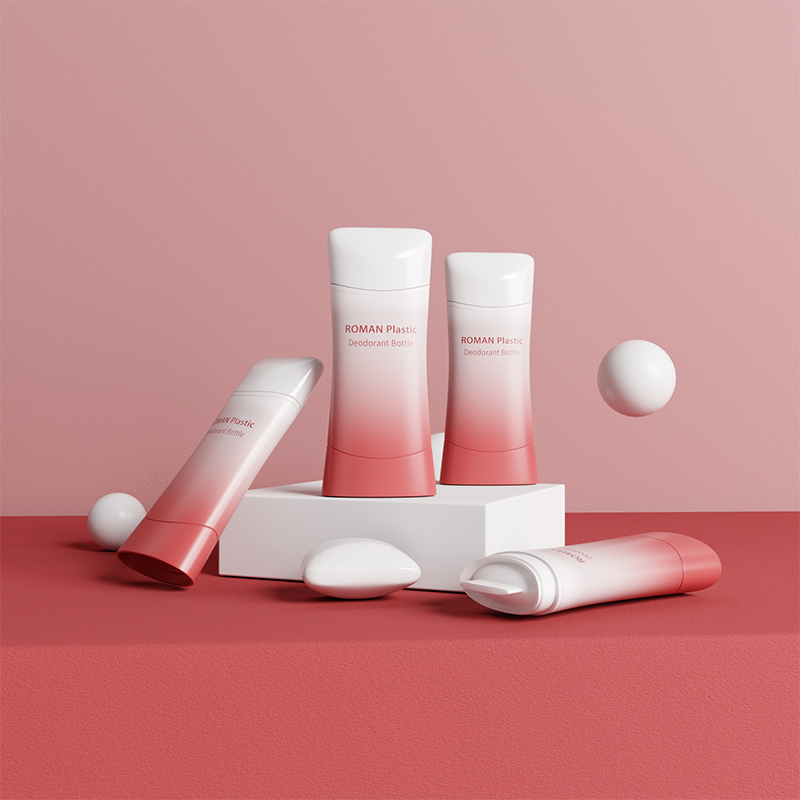 |
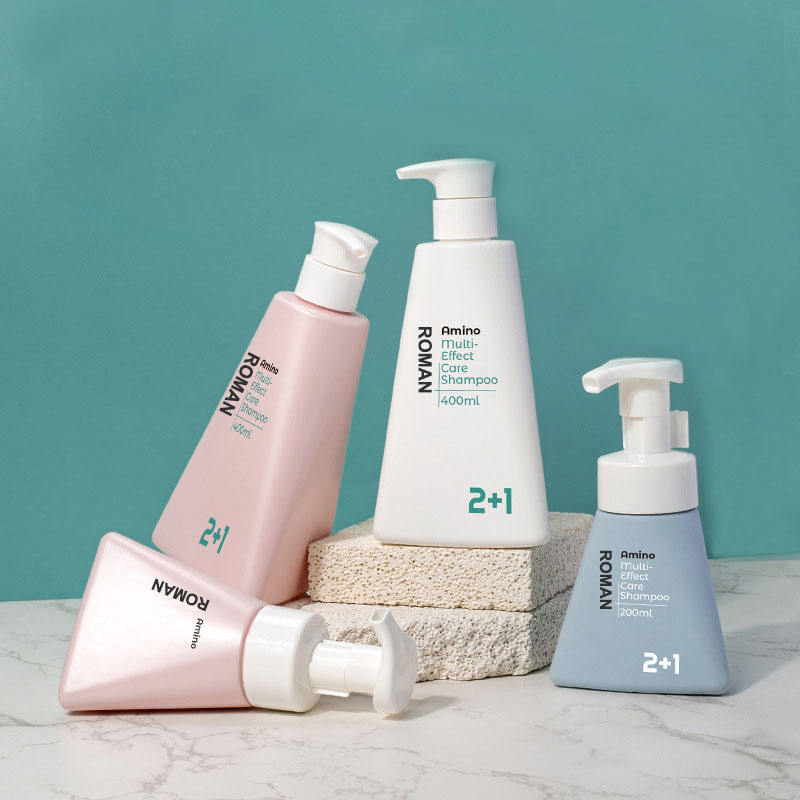 |
Sustainability Considerations in the Production and Disposal of Plastic Skincare Bottles
As environmental concerns continue to grow, sustainability has become a key focus in the packaging industry. The skincare sector, like many others, is increasingly aware of its environmental impact, and manufacturers are seeking ways to make their packaging more sustainable. Plastic skincare bottles, when produced and disposed of responsibly, offer a range of environmental benefits, particularly when compared to other materials like glass or metal.
Recyclability and Material Choices
One of the key factors in the sustainability of plastic skincare bottles is their recyclability. While not all plastics are recyclable, many skincare bottles are made from materials such as PET (polyethylene terephthalate) or HDPE (high-density polyethylene), both of which are widely accepted by recycling programs. These materials can be recycled and reused to create new products, reducing the demand for virgin plastic and minimizing the overall environmental impact.
PET, in particular, is a popular choice for skincare packaging because it is not only recyclable but also lightweight and durable. Brands that use PET or other recyclable plastics help reduce waste by ensuring that their packaging can be processed into new products at the end of its life cycle. Additionally, PET is considered one of the safest plastics for food and cosmetic products, further adding to its appeal in skincare packaging.
Some brands are also exploring alternatives like biodegradable plastics made from renewable resources, such as plant-based polymers. These materials break down more easily in the environment, reducing the long-term impact of plastic waste. Though still in the developmental phase, biodegradable plastics offer a promising solution to the growing concerns over plastic pollution.
Reducing Plastic Waste through Eco-Friendly Packaging Initiatives
In addition to using recyclable plastics, many skincare brands are implementing initiatives to reduce plastic waste. For example, some companies have begun to offer refillable plastic bottles, allowing consumers to purchase a refill and reuse the original packaging. This model reduces the need for new packaging, helping to minimize the amount of plastic waste generated.
Other brands are introducing packaging made from post-consumer recycled (PCR) plastic, which is sourced from recycled plastic products rather than new raw materials. By using PCR plastic, companies help close the loop on plastic waste, reducing the demand for virgin plastic and supporting the circular economy. PCR plastic can be recycled multiple times, making it a sustainable option for skincare packaging.
Some brands are also designing their packaging with minimal material use in mind. For example, the use of thinner plastic walls or minimalist designs reduces the amount of plastic needed to produce the bottle. These efforts help decrease the overall environmental footprint of the packaging.
Energy-Efficient Production Processes
The energy required to produce plastic skincare bottles is another consideration in terms of sustainability. Although plastic bottles are generally more energy-efficient to produce than glass bottles, manufacturers are continuously exploring ways to further reduce energy consumption in the production process. For instance, some companies are adopting energy-efficient machinery, using renewable energy sources, or implementing production processes that minimize waste and reduce emissions.
By adopting these practices, companies can significantly lower the carbon footprint of their plastic packaging. Additionally, advancements in manufacturing technology have made it possible to create plastic bottles that require less material while maintaining their strength and functionality, further enhancing their sustainability.
Sustainable Disposal and Consumer Education
Once a plastic skincare bottle has reached the end of its life, proper disposal is critical for minimizing environmental harm. Educating consumers about how to properly dispose of or recycle plastic packaging is essential for ensuring that these materials are properly processed and do not contribute to landfill waste or ocean pollution.
Many brands are taking responsibility for the disposal of their packaging by partnering with recycling programs or offering take-back schemes where consumers can return empty bottles for recycling. In addition to encouraging consumers to recycle, brands are also promoting the use of refillable packaging options, which significantly reduce the demand for single-use plastic bottles.
Plastic Waste Reduction through Packaging Innovation
Plastic waste reduction efforts have also led to the development of innovative packaging solutions that go beyond traditional plastic bottles. Brands are exploring packaging alternatives such as compostable materials, plant-based plastics, and even refill stations in stores, which allow consumers to refill their existing bottles rather than purchasing new ones. These initiatives not only reduce plastic waste but also contribute to the overall reduction of the skincare industry's carbon footprint.
The Consumer Perspective: Why Plastic Skincare Bottles Are the Preferred Choice
From a consumer perspective, plastic skincare bottles offer a host of benefits that make them the preferred choice for packaging skincare products. These advantages range from cost-effectiveness and convenience to the ability to preserve the product’s integrity and effectiveness. Understanding why consumers favor plastic bottles over other materials can shed light on the growing popularity of plastic in the skincare industry.
Affordability and Accessibility
One of the primary reasons consumers prefer plastic skincare bottles is their affordability. Compared to glass or metal packaging, plastic is significantly less expensive to produce, which means that skincare products packaged in plastic bottles are typically priced more competitively. This makes high-quality skincare products more accessible to a wider range of consumers, including those who might otherwise be priced out of premium products.
Affordable packaging also allows brands to offer larger quantities of products at a lower price, which is attractive to consumers looking for value for money. This is particularly important in the skincare industry, where repeat purchases of products like cleansers, moisturizers, and sunscreens are common. Consumers can buy more product for less money, increasing their overall satisfaction.
Convenience and Portability
Plastic skincare bottles are incredibly convenient for consumers. Their lightweight and durable nature make them easy to carry around, which is especially important for those who are constantly on the go. Whether it’s a travel-sized cleanser, a toner for the gym bag, or a full-sized moisturizer for home use, plastic packaging provides a hassle-free experience for consumers.
Additionally, the wide variety of dispensing options available with plastic bottles, including pumps, sprays, and squeezable nozzles, adds to their usability. These features allow consumers to control the amount of product dispensed, leading to a more efficient and less wasteful skincare routine.
Transparency and Brand Loyalty
Another key factor contributing to the popularity of plastic skincare bottles is the transparency that they provide. Many plastic bottles, especially those made from PET, are clear, which allows consumers to see how much product is left inside. This transparency fosters trust and enhances the overall consumer experience, as people tend to feel more confident in using a product when they can monitor its remaining quantity.
The visibility of the product also helps consumers assess its texture and consistency before application, which is particularly important for skincare products with a creamy or gel-like consistency. The transparency of the packaging contributes to a sense of honesty and transparency, which builds brand loyalty and positive perceptions of the product.
The Role of Plastic Skincare Bottles in Preserving Product Freshness and Stability
Preserving the freshness and stability of skincare products is of utmost importance in ensuring their efficacy and safety. The packaging material plays a critical role in protecting sensitive formulas from exposure to air, light, and contaminants. Plastic skincare bottles, with their unique properties, offer numerous advantages in preserving the quality of skincare products, ensuring that consumers receive the maximum benefits of the active ingredients throughout the product’s shelf life.
Protection from Environmental Factors
Skincare products often contain active ingredients, such as antioxidants, vitamins, peptides, and essential oils, that are highly sensitive to external factors like air, light, and temperature. Exposure to oxygen can lead to the oxidation of these ingredients, which degrades their effectiveness. Similarly, light can cause certain ingredients to break down, reducing their efficacy. Plastic bottles, especially those made from opaque or tinted materials, provide effective barriers against these environmental factors, ensuring that the product inside remains stable and fresh for longer periods.
Plastic packaging materials such as PET (polyethylene terephthalate) and HDPE (high-density polyethylene) offer a level of protection against UV radiation that helps to prevent the degradation of sensitive ingredients. Some plastic bottles are designed with UV-blocking capabilities or are coated with a layer of protection to further safeguard the product inside. This is especially important for products that contain vitamin C, retinol, or other light-sensitive compounds, which can lose their effectiveness when exposed to direct sunlight.
Airless Pump Systems for Improved Freshness
Plastic skincare bottles are often designed with airless pump systems, which provide enhanced protection against air exposure. Airless pumps use a vacuum system to dispense the product, meaning that air cannot enter the bottle as the product is used. This ensures that the formula inside remains isolated from oxygen, preserving the integrity of the ingredients and preventing oxidation. By limiting the introduction of air, airless packaging not only extends the shelf life of the product but also maintains the freshness and potency of the formula.
The airless design also minimizes the need for preservatives in the product. Because the formula is not exposed to air, there is a lower risk of bacterial or fungal contamination, which means that fewer preservatives are necessary to keep the product safe. This is particularly appealing for consumers who seek skincare products with fewer synthetic chemicals.
Hygienic Dispensing to Maintain Product Integrity
Plastic skincare bottles are designed with various dispensing mechanisms, including pumps, droppers, and squeeze caps, all of which contribute to maintaining the integrity of the product. These dispensing systems are engineered to reduce direct contact between the product and external elements, minimizing the risk of contamination and degradation. For instance, pumps and dispensers limit the exposure of the product to air, while preventing the user’s hands from coming into contact with the formula, which could introduce bacteria or dirt.
Squeeze bottles are another example of packaging that preserves product freshness. When designed with a well-sealed nozzle or cap, squeeze bottles prevent external contaminants from entering the product. The controlled dispensing also helps reduce product waste, as consumers can easily squeeze out the desired amount of product without having to open the bottle and expose the formula to environmental factors.
Maintaining the Stability of Emulsions and Active Ingredients
Many skincare formulations, especially moisturizers and sunscreens, contain emulsions, which are mixtures of oil and water-based ingredients. These emulsions are often sensitive to temperature fluctuations and exposure to light, both of which can cause the ingredients to separate or break down over time. Plastic skincare bottles, especially those with airtight seals and opaque designs, offer better protection against these destabilizing factors compared to glass bottles. The stability of emulsions is crucial to maintaining the desired texture, consistency, and efficacy of the product.
Plastic packaging can also prevent the degradation of active ingredients such as hyaluronic acid, peptides, and other proteins, which are commonly used in high-performance skincare formulations. These ingredients are sensitive to environmental stressors, and exposure to air or light can lead to the breakdown of their molecular structure. By using plastic bottles that offer superior protection from external elements, skincare brands can ensure that their products maintain their intended effectiveness throughout their shelf life.
Preventing Contamination and Preserving Efficacy
Another key advantage of plastic skincare bottles is their ability to prevent contamination. By offering secure, tamper-evident seals, child-resistant caps, and airless dispensing systems, plastic bottles help to keep the product free from external contaminants such as dirt, bacteria, or dust. This is especially important for sensitive skincare products that come into direct contact with the skin, such as cleansers, serums, and moisturizers.
The reduction in contamination risks not only ensures product safety but also contributes to the preservation of the product’s efficacy. For example, when a skincare product is free from contamination, its active ingredients are less likely to be affected by microbial activity, which could potentially degrade their effectiveness. Furthermore, by maintaining the integrity of the product, plastic skincare bottles help to reduce the need for preservatives, which can be a source of irritation for consumers with sensitive skin.
In addition, some plastic bottles are designed with anti-microbial or anti-fungal coatings that further protect the product from contamination, ensuring that it remains safe and effective over time.
Plastic Skincare Bottles in the Era of Eco-Conscious Consumerism
As consumer awareness of environmental issues grows, there has been a significant shift toward more sustainable practices in various industries, including skincare. Eco-conscious consumers are increasingly seeking products that align with their values, particularly when it comes to packaging. In this context, plastic skincare bottles are often viewed with skepticism due to their environmental impact. However, the skincare industry is responding to this demand by introducing innovative and eco-friendly solutions that make plastic bottles more sustainable and environmentally friendly.
The Shift Towards Recyclable and Reusable Plastics
One of the most significant steps toward sustainability in skincare packaging is the use of recyclable materials. Many skincare brands are now opting for plastics such as PET (polyethylene terephthalate), which are widely recyclable and accepted by most curbside recycling programs. PET is a lightweight, durable material that is used in many skincare products, from cleansers to moisturizers, and its recyclability means that it can be processed and reused to create new products, reducing the demand for virgin plastic.
Furthermore, many skincare companies are encouraging consumers to recycle their plastic bottles by clearly labeling them with recycling instructions. This transparency helps to ensure that consumers understand how to properly dispose of the packaging, increasing the likelihood that the bottles will be recycled instead of ending up in landfills.
The rise of reusable plastic bottles has also become a prominent trend in the skincare industry. By offering refillable plastic bottles, brands are encouraging consumers to reuse their packaging rather than purchasing new products in disposable bottles. This approach helps to reduce plastic waste, as consumers are able to refill their bottles with new product refills, thus cutting down on the need for single-use packaging.
Bio-Based and Plant-Based Plastics
In addition to recyclable plastics, the skincare industry is exploring alternative materials, such as bio-based plastics and plant-based polymers. These plastics are derived from renewable resources, such as corn, sugarcane, or bamboo, and offer an eco-friendly alternative to traditional petroleum-based plastics. Bio-based plastics are biodegradable and can break down more easily in the environment, reducing their long-term environmental impact.
Several skincare brands are already adopting these plant-based plastics for their packaging, especially for products that target eco-conscious consumers. By using plant-based plastics, these brands are reducing their reliance on fossil fuels and minimizing their carbon footprint, contributing to a more sustainable future.
The Role of Upcycled Plastics
Another promising development in the realm of eco-conscious packaging is the use of upcycled plastics. Upcycling involves taking post-consumer plastic waste—such as discarded plastic bottles—and repurposing it into new products. Some skincare brands are now using upcycled plastics in their packaging, which helps to divert plastic waste from landfills and reduce the need for new raw materials. This process not only supports a circular economy but also aligns with the growing demand for more sustainable packaging solutions.
Upcycled plastics can be used to create a variety of packaging options, from basic plastic bottles to more complex designs. As technology advances, it is likely that the use of upcycled plastics will become more widespread, allowing skincare brands to further reduce their environmental impact.
Energy-Efficient Production Methods
The production of plastic skincare bottles has traditionally been an energy-intensive process, but manufacturers are increasingly adopting more energy-efficient production methods to minimize their environmental impact. Many companies are investing in machinery that reduces energy consumption during the molding and shaping of plastic bottles. Additionally, some brands are sourcing their materials from suppliers who use renewable energy sources, further reducing the carbon footprint of their products.
By optimizing production processes and reducing energy consumption, the skincare industry is making significant strides toward more sustainable practices. These efforts contribute to reducing the overall environmental impact of plastic skincare bottles while still maintaining the high standards of quality and durability that consumers expect.
Educating Consumers and Promoting Sustainable Practices
Beyond the materials used in packaging, educating consumers about sustainable practices is an important aspect of promoting eco-conscious skincare products. Many brands are using their platforms to raise awareness about the importance of recycling and reusing plastic packaging. By offering incentives such as discounts for returning empty bottles or providing information on how to recycle the packaging correctly, brands can encourage consumers to be more mindful of their environmental impact.
In addition to recycling, some brands are also promoting the use of refill stations, where consumers can refill their existing bottles with new product formulations. This model reduces the need for additional packaging and helps consumers reduce their overall plastic consumption.
The Future of Sustainable Plastic Skincare Bottles
Looking ahead, the future of plastic skincare bottles in the context of eco-conscious consumerism seems promising. As innovation in materials and production processes continues to evolve, the industry is likely to see even more sustainable alternatives to traditional plastic packaging. From fully biodegradable plastics to new recycling technologies, the possibilities for reducing the environmental impact of plastic bottles are vast.


 English
English Español
Español